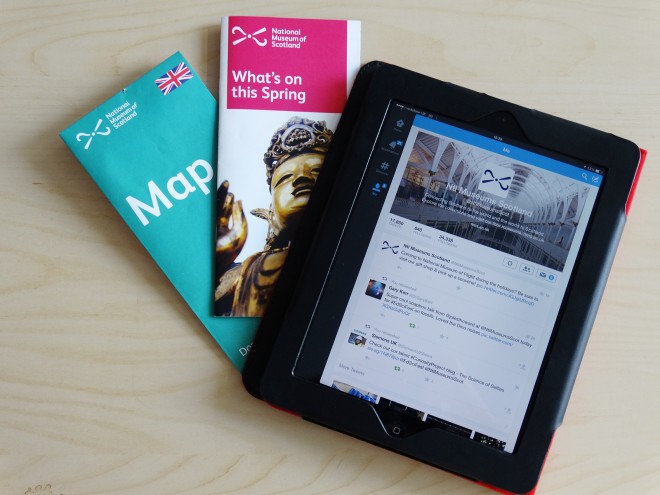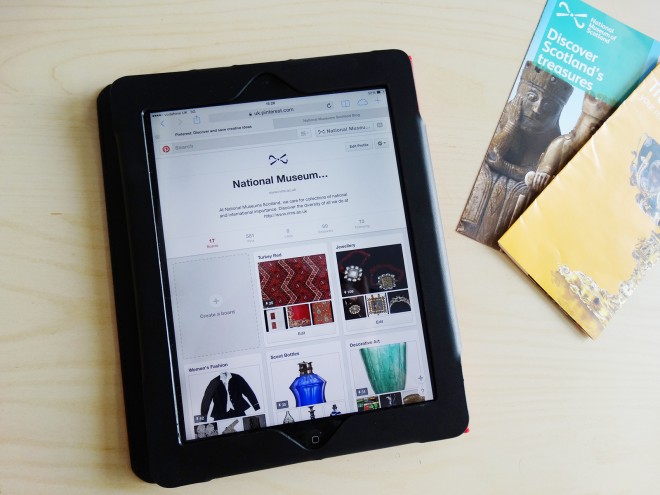Museum organisations have one common goal: to tell the stories of their collections to audiences locally, nationally and worldwide.
In fact, increasingly, that worldwide focus has become more apparent. The Internet, as a whole, has enabled cultural organisations to propel themselves on a global platform to a much broader audience, where visitors can search for everything from armadillos to Zulus, horse armour to Celtic shoes (just some of the searches we’ve had on our website lately).. at all times of the day! Social media, in particular, is now one of the key ways we have to communicate with these ever-curious visitors.

But, what is it we do to ensure our social media presence entertains and engages our audiences, whilst highlighting those all-important diverse and internationally important collections?
Here’s what I think the key things are..
1. Know your brand
First, let’s start with the brand guidelines; the core of all the messages we promote externally. We aim to “inform, educate and inspire” museum visitors; both in the traditional visitor sense and online. This is the essence of what we’re about, and it’s important our social media platforms achieve all (or most) of these things. One of the things I’m proudest to have accomplished whilst here is the creation of a Pinterest presence. Having seen the work other similar museums have achieved on this platform, I knew it was something that would appeal to and inspire our global audiences and align with our own brand image. From Women’s Fashion to Turkey Red textiles, it’s all there waiting to be discovered…
2. Know your voice
A key step to take is to develop a clear, distinct and consistent tone of voice across your social media channels. There may be #hashtags and 140 characters on Twitter and comments and likes on Facebook, but the one thing that should remain steady is your tone. Since coming on board with the Digital Media team, I’ve ensured that lively, informative and friendly tone is something that sets us apart and encourages our audiences to get in touch; show us their photos and write about their experiences within our museums. Being seen as open and friendly is vital to keeping audiences engaged.
3. Know your audiences
We’ve been beavering away recently trying to really determine who our core audiences are and what interests them, in detail. This is such a major part of ensuring social media content engages with the right museum audiences. National Museum of Flight regulars might be passionate about Concorde whilst National Museum of Rural Life visitors might want to learn more about everyday life on a working farm. It’s our job to get the right message across to the right people in the right way.
4. Plan for the future, but leave room to react
Some of the best content we have produced during my time with the team have been spur of the moment reactions to topical relevant points of interest. For example, PacMan on Google Maps, the release of the Imitation Game film, and the Great Museum Bake-off. On that note, however: don’t be the brand who jump on every popular culture reference. If it feels natural, take it and make it your own. If it doesn’t, discard it.
However, equally, strategising for the future has enabled us to spend quality time conjuring up those creative ideas which you’ll be seeing in days, weeks and months to come. Having plotted World Book Day in our calendar, we set off in search of Morven Donald – our Library and Information Assistant – to let us go behind the scenes in the depths of National Museums Scotland’s library archives for one of our most popular blog posts this year.
5. And finally.. have fun!
After all, some of the best content can come out of being playful. Take this April Fools fish we posted about on Facebook recently for example. Certainly one that hit the headlines with STV Edinburgh!

One thing I am hopeful I will leave as a lasting legacy from my time working with the Digital Media team at National Museums Scotland is a clear awareness of the importance of managing social media as a key way of “informing, educating and inspiring” our global audiences for years to come. And a fond appreciation for pinning some ‘Beautiful Bugs‘ on Pinterest…

